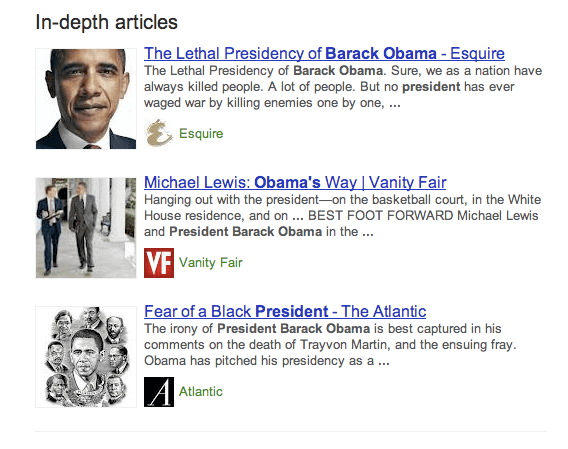In August, the U.S. giant Google implemented a new feature regarding the way content is indexed, which is called “In-DepthArticles,” making the effectiveness and value of SEO even stronger.
Users routinely turn to the world’s most famous search engine in search of information by entering keywords that are sometimes overly generic, and the first results do not always match what they want. To facilitate and improve the search process, Google has recently implemented a new algorithm system that allows it to show content that has precise structures and specific content based on the searched topic. Generally speaking, the “in depth articles” is designed to meet the needs for more information context through a precise new indexing algorithm that can favor a contextualization system created from scratch and to the disadvantage of large telematic encyclopedias such as Wikipedia. But what exactly does this system consist of? Primarily after typing the first few words we see“blocks” of articles appear accompanied by a thumbnail image, a title in blue linked to the original page, an excerpt of the content and at the bottom the source of the blog or site from which the information came. This new Snippet is very important as far as the world of communication and marketing in general is concerned, in fact, the visitor is able to immediately benefit from the most well-known content, speeding up the in-depth operations and discarding the paths of lesser interest. But that’s not all. The promises of the U.S. giant are to give greater visibility to less famous bloggers and news outlets, to highlight independent and spontaneous information. “Fuller publications” which does not necessarily mean those signed by the world’s news brands but “content can come from well-known, lesser-known titles or blogs,” as Jacob Hubert points out.
The importance of having an Authorship
At this point it becomes apparent that Google has decided to join a new visual format in SERPs that also emphasizes authors as well as the validity of the editorial product. It seems obvious to say but, in a world that seems to reduce everything to an awkward impersonality, having a reference image next to an article gives it more credibility from an audience that can finally associate a face with the words they read, and this is not to be underestimated. We are used to seeing the thickest articles catalogued with attached links and images, with this new project it aims to highlight all kinds of topics based on “lists” drawn up directly by the great minds of Google, which could be quite curious in order to identify what the assembly criteria of the great colossus might be. We need only type in terms such as Censorship rather than Happiness and the search engine will provide us with a list of articles with Authorship attached as a trademark and guarantee, selecting from a large number of well-known sources and a few good, lesser-known blogs. How will this skimming take place? By taking advantage of several indicators of quality and depth so the articles that Google recognizes as good on a specific topic will thus remain prominent within the new box for longer.

At the moment the goal appears to be far away, not only from a geographical point of view but also from a telematic point of view, will it be possible to give the right space even to smaller circulation titles? All hope is not lost; it will only take a little more effort to achieve the desired results.
First, the following outline should be strictly adhered to:
- Title based on a Schema.org Article markup
- Authorship markup, an identifiable and indexable image
- Organization logo (or Publisher)
- Pagination (description, date of publication, and body of the article)
So while America is preparing to welcome Google Now as the new Google Search interface, it seems that in Italy the news is passing in silence, not seeing the light, nevertheless we web lovers have only to wait for the fateful moment when the wind of Google’s novelty shakes something up here as well.
